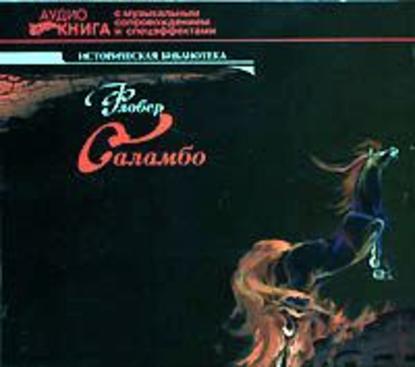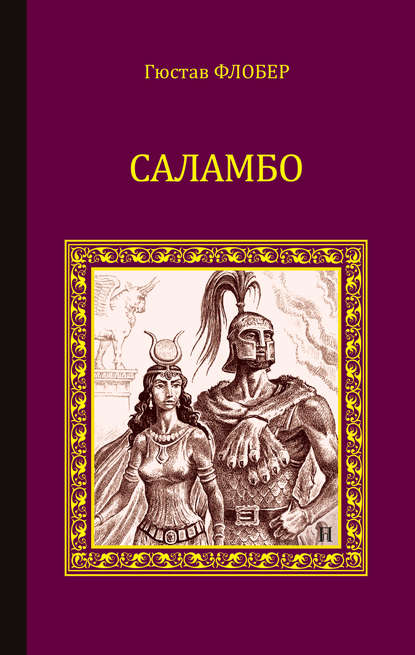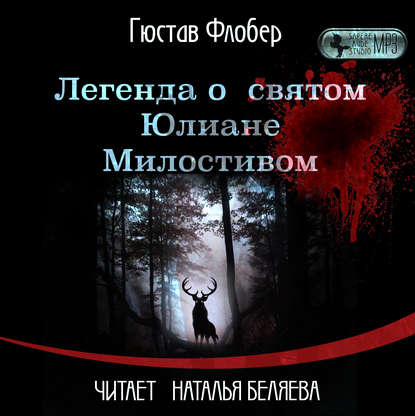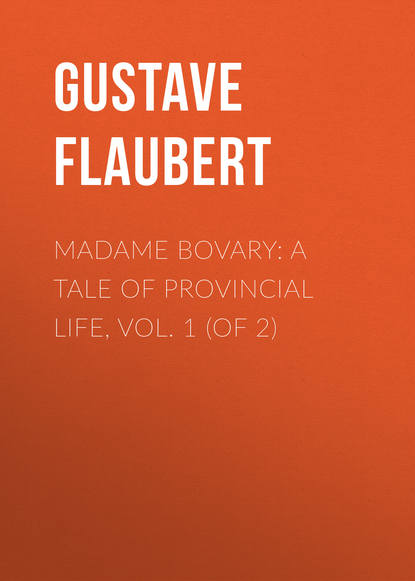
Полная версия
Over Strand and Field: A Record of Travel through Brittany
This style of embellishment abounds throughout La Garenne. There is a temple erected to Vesta, and directly opposite it another erected to Friendship…
Inscriptions, artificial rocks, factitious ruins, are scattered lavishly, with artlessness and conviction… But the poetical riches centre in the grotto of Héloïse, a sort of natural dolmen on the bank of the Sèvre.
Why have people made Héloïse, who was such a great and noble figure, appear commonplace and silly, the prototype of all crossed loves and the narrow ideal of sentimental schoolgirls? The unfortunate mistress of the great Abélard deserved a better fate, for she loved him with devoted admiration, although he was hard and taciturn at times and spared her neither bitterness nor blows. She dreaded offending him more than she dreaded offending God, and strove harder to please him. She did not wish him to marry her, because she thought that "it was wrong and deplorable that the one whom nature had created for all … should be appropriated by one woman." She found, she said, "more happiness in the appellation of mistress or concubine, than in that of wife or empress," and by humiliating herself in him, she hoped to gain a stronger hold over his heart.
The park is really delightful. Alleys wind through the woods and clusters of trees bend over the meandering stream. You can hear the bubbling water and feel the coolness of the foliage. If we were irritated by the bad taste displayed here, it was because we had just left Clisson, which has a real, simple, and solid beauty, and after all, this bad taste is not that of our contemporaries. But what is, in fact, bad taste? Invariably it is the taste of the period which has preceded ours. Bad taste at the time of Ronsard was represented by Marot; at the time of Boileau, by Ronsard; at the time of Voltaire, by Corneille, and by Voltaire in the day of Chateaubriand, whom many people nowadays begin to think a trifle weak. O men of taste in future centuries, let me recommend you the men of taste of to-day! You will laugh at their cramps, their superb disdain, their preference for veal and milk, and the faces they make when underdone meat and too ardent poetry is served to them. Everything that is beautiful will then appear ugly; everything that is graceful, stupid; everything that is rich, poor; and oh! how our delightful boudoirs, our charming salons, our exquisite costumes, our palpitating plays, our interesting novels, our serious books will all be consigned to the garret or be used for old paper and manure! O posterity, above all things do not forget our gothic salons, our Renaissance furniture, M. Pasquier's discourses, the shape of our hats, and the aesthetics of La Revue des Deux Mondes!
While we were pondering upon these lofty philosophical considerations, our wagon had hauled us over to Tiffanges. Seated side by side in a sort of tin tub, our weight crushed the tiny horse, which swayed to and fro between the shafts. It was like the twitching of an eel in the body of a musk-rat. Going down hill pushed him forward, going up hill pulled him backward, while uneven places in the road threw him from side to side, and the wind and the whip lashed him alternately. The poor brute! I cannot think of him now without a certain feeling of remorse.
The road down hill is curved and its edges are covered with clumps of sea-rushes or large patches of a certain reddish moss. To the right, on an eminence that starts from the bottom of the dale and swells in the middle like the carapace of a tortoise, one perceives high, unequal walls, the crumbling tops of which appear one above another.
One follows a hedge, climbs a path, and enters an open portal which has sunken into the ground to the depth of one third of its ogive. The men who used to pass through it on horseback would be obliged to bend over their saddles in order to enter it to-day. When the earth is tired of supporting a monument, it swells up underneath it, creeps up to it like a wave, and while the sky causes the top to crumble away, the ground obliterates the foundations. The courtyard was deserted and the calm water that filled the moats remained motionless and flat under the pond-lilies.
The sky was white and cloudless, but without sunshine. Its bleak curve extended far away, covering the country with a cold and cheerless monotony. Not a sound could be heard, the birds did not sing, even the horizon was mute, and from the empty furrows came neither the scream of the crows as they soar heavenward, nor the soft creaking of plough-wheels. We climbed down through brambles and underbrush into a deep and dark trench, hidden at the foot of a large tower, which stands in the water surrounded by reeds. A lone window opens on one side: a dark square relieved by the grey line of its stone cross-bar. A capricious cluster of wild honeysuckle covers the sill, and its maze of perfumed blossoms creeps along the walls. When one looks up, the openings of the big machicolations reveal only a part of the sky, or some little, unknown flower which has nestled in the battlement, its seed having been wafted there on a stormy day and left to sprout in the cracks of the stones.
Presently, a long, balmy breeze swept over us like a sigh, and the trees in the moats, the moss on the stones, the reeds in the water, the plants among the ruins, and the ivy, which covered the tower from top to bottom with a layer of shining leaves, all trembled and shook their foliage; the corn in the fields rippled in endless waves that again and again bent the swaying tops of the ears; the pond wrinkled and welled up against the foot of the tower; the leaves of the ivy all quivered at once, and an apple-tree in bloom covered the ground with pink blossoms.
Nothing, nothing! The open sky, the growing grass, the passing wind. No ragged child tending a browsing cow; not even, as elsewhere, some solitary goat sticking its shaggy head through an aperture in the walls to turn at our approach and flee in terror through the bushes; not a song-bird, not a nest, not a sound! This castle is like a ghost: mute and cold, it stands abandoned in this deserted place, and looks accursed and replete with terrifying recollections. Still, this melancholy dwelling, which the owls now seem to avoid, was once inhabited. In the dungeon, between four walls as livid as the bottom of an old drinking-trough, we were able to discover the traces of five floors. A chimney, with its two round pillars and black top, has remained suspended in the air at a height of thirty feet. Earth has accumulated on it, and plants are growing there as if it were a jardinière.
Beyond the second enclosure, in a ploughed field, one can recognise the ruins of a chapel by the broken shafts of an ogive portal. Grass has grown around it, and trees have replaced the columns. Four hundred years ago, this chapel was filled with ornaments of gold cloth and silk, censers, chandeliers, chalices, crosses, precious stones, gold vessels and vases, a choir of thirty singers, chaplains, musicians, and children sang hymns to the accompaniment of an organ which they took along with them when they travelled. They were clad in scarlet garments lined with pearl grey and vair. There was one whom they called archdeacon, and another whom they called bishop, and the Pope was asked to allow them to wear mitres like canons, for this chapel was the chapel, and this castle one of the castles of Gilles de Laval, lord of Rouci, of Montmorency, of Retz and of Craon, lieutenant-general of the Duke of Brittany and field-marshal of France, who was burned at Nantes on the 25th of October, 1440, in the Prée de la Madéleine for being a counterfeiter, a murderer, a magician, an atheist and a Sodomite.
He possessed more than one hundred thousand crowns' worth of furniture; an income of thirty thousand pounds a year, the profits of his fiefs and his salary as field-marshal; fifty magnificently appointed horsemen escorted him. He kept open house, served the rarest viands and the oldest wines at his board, and gave representations of mysteries, as cities used to do when a king was within their gates. When his money gave out, he sold his estates; when those were gone, he looked around for more gold, and when he had destroyed his furnaces, he called on the devil. He wrote him that he would give him all that he possessed, excepting his life and his soul. He made sacrifices, gave alms and instituted ceremonies in his honour. At night, the bleak walls of the castle lighted up by the glare of the torches that flared amid bumpers of rare wines and gipsy jugglers, and blushed hotly under the unceasing breath of magical bellows. The inhabitants invoked the devil, joked with death, murdered children, enjoyed frightful and atrocious pleasures; blood flowed, instruments played, everything echoed with voluptuousness, horror, and madness.
When he expired, four or five damsels had his body removed from the stake, laid out, and taken to the Carmelites, who, after performing the customary services, buried him in state.
On one of the bridges of the Loire, relates Guépin, opposite the Hôtel de la Boule-d'Or, an expiatory monument was erected to his memory. It was a niche containing the statue of the Bonne Vierge de crée lait, who had the power of creating milk in nurses; the good people offered her butter and similar rustic products. The niche still exists, but the statue is gone; the same as at the town-house, where the casket which contained the heart of Queen Anne is also empty. But we did not care to see the casket; we did not even give it a thought. I should have preferred gazing upon the trousers of the marshal of Retz to looking at the heart of Madame Anne de Bretagne.
CHAPTER III.
CARNAC
The field of Carnac is a large, open space where eleven rows of black stones are aligned at symmetrical intervals. They diminish in size as they recede from the ocean. Cambry asserts that there were four thousand of these rocks and Fréminville has counted twelve hundred of them. They are certainly very numerous.
What was their use? Was it a temple?
One day Saint Cornille, pursued along the shore by soldiers, was about to jump into the ocean, when he thought of changing them all into stone, and forthwith the men were petrified. But this explanation was good only for fools, little children, and poets. Other people looked for better reasons.
In the sixteenth century, Olaüs Magnus, archbishop of Upsal (who, banished to Rome, wrote a book on the antiquities of his country that met with widespread success except in his native land, Sweden, where it was not translated), discovered that, when these stones form one long, straight row, they cover the bodies of warriors who died while fighting duels; that those arranged in squares are consecrated to heroes that perished in battle; that those disposed in a circle are family graves, while those that form corners or angular figures are the tombs of horsemen or foot-soldiers, and more especially of those fighters whose party had triumphed. All this is quite clear, but Olaüs Magnus has forgotten to tell us how two cousins who killed each other in a duel on horseback could have been buried. The fact of the duel required that the stones be straight; the relationship required that they be circular; but as the men were horsemen, it seems as if the stones ought to have been arranged squarely, though this rule, it is true, was not formal, as it was applied only to those whose party had triumphed. O good Olaüs Magnus! You must have liked Monte-Pulciano exceeding well! And how many draughts of it did it take for you to acquire all this wonderful knowledge?
According to a certain English doctor named Borlase, who had observed similar stones in Cornouailles, "they buried soldiers there, in the very place where they died." As if, usually, they were carted to the cemetery! And he builds his hypothesis on the following comparison: their graves are on a straight line, like the front of an army on plains that were the scene of some great action.
Then they tried to bring in the Greeks, the Egyptians, and the Cochin Chinese! There is a Karnac in Egypt, they said, and one on the coast of Brittany. Now, it is probable that this Karnac descends from the Egyptian one; it is quite certain! In Egypt they are sphinxes; here they are rocks; but in both instances they are of stone. So it would seem that the Egyptians (who never travelled), came to this coast (of the existence of which they were ignorant), founded a colony (they never founded any), and left these crude statues (they produced such beautiful ones), as a positive proof of their sojourn in this country (which nobody mentions).
People fond of mythology thought them the columns of Hercules; people fond of natural history thought them a representation of the python, because, according to Pausanias, a similar heap of stones, on the road from Thebes to Elissonte, was called "the serpent's head," and especially because the rows of stones at Carnac present the sinuosities of a serpent. People fond of cosmography discovered a zodiac, like M. de Cambry, who recognised in those eleven rows of stones the twelve signs of the zodiac, "for it must be stated," he adds, "that the ancient Gauls had only eleven signs to the zodiac."
Subsequently, a member of the Institute conjectured that it might perhaps be the cemetery of the Venetians, who inhabited Vannes, situated six miles from Carnac, and who founded Venice, as everybody knows. Another man wrote that these Venetians, conquered by Cæsar, erected all those rocks solely in a spirit of humility and in order to honour their victor. But people were getting tired of the cemetery theory, the serpent and the zodiac; they set out again and this time found a Druidic temple.
The few documents that we possess, scattered through Pliny and Dionysius Cassius, agree in stating that the Druids chose dark places for their ceremonies, like the depths of the woods with "their vast silence." And as Carnac is situated on the coast, and surrounded by a barren country, where nothing but these gentlemen's fancies has ever grown, the first grenadier of France, but not, in my estimation, the cleverest man, followed by Pelloutier and by M. Mahé, (canon of the cathedral of Vannes), concluded that it was "a Druidic temple in which political meetings must also have been held."
But all had not been said, and it still remained to be discovered of what use the empty spaces in the rows could have been. "Let us look for the reason, a thing nobody has ever thought of before," cried M. Mahé, and, quoting a sentence from Pomponius Mela: "The Druids teach the nobility many things and instruct them secretly in caves and forests;" and this one from Tucain: "You dwell in tall forests," he reached the conclusion that the Druids not only officiated at the sanctuaries, but that they also lived and taught in them. "So the monument of Carnac being a sanctuary, like the Gallic forests," (O power of induction! where are you leading Father Mahé, canon of Vannes and correspondent of the Academy of Agriculture at Poitiers?), there is reason to believe that the intervals, which break up the rows of stones, held rows of houses where the Druids lived with their families and numerous pupils, and where the heads of the nation, who, on state days, betook themselves to the sanctuary, found comfortable lodgings. Good old Druids! Excellent ecclesiastics! How they have been calumnied! They lived there so righteously with their families and numerous pupils, and even were amiable enough to prepare lodgings for the principals of the nation!
But at last came a man imbued with the genius of ancient things and disdainful of trodden paths. He was able to recognize the rests of a Roman camp, and, strangely enough, the rests of one of the camps of Cæsar, who had had these stones upreared only to serve as support for the tents of his soldiers and prevent them from being blown away by the wind. What gales there must have been in those days, on the coasts of Armorica!
The honest writer who, to the glory of the great Julius, discovered this sublime precaution, (thus returning to Cæsar that which never belonged to Cæsar), was a former pupil of l'École Polytechnique, an engineer, a M. de la Sauvagère. The collection of all these data constitutes what is called Celtic Archæology, the mysteries of which we shall presently disclose.
A stone placed on another one is called a "dolmen," whether it be horizontal or perpendicular. A group of upright stones covered by succeeding flat stones, and forming a series of dolmens, is a "fairy grotto," a "fairy rock," a "devil's stable," or a "giant's palace"; for, like the people who serve the same wine under different labels, the Celto-maniacs, who had almost nothing to offer, decorated the same things with various names. When these stones form an ellipse, and have no head-covering, one must say: There is a "cromlech"; when one perceives a stone laid horizontally upon two upright stones, one is confronted by a "lichaven" or a "trilithe." Often two enormous rocks are put one on top of the other, and touch only at one point, and we read that "they are balanced in such a way that the wind alone is sufficient to make the upper rock sway perceptibly," an assertion which I do not dispute, although I am rather suspicious of the Celtic wind, and although these swaying rocks have always remained unshaken in spite of the fierce kicks I was artless enough to give them; they are called "rolling or rolled stones," "turned or transported stones," "stones that dance or dancing stones," "stones that twist or twisting stones." You must still learn what a pierre fichade, a pierre fiche, a pierre fixée are, and what is meant by a haute borne, a pierre latte and a pierre lait; in what a pierre fonte differs from a pierre fiette, and what connection there is between a chaire à diable and a pierre droite; then you will be as wise as ever were Pelloutier, Déric, Latour d'Auvergne, Penhoet and others, not forgetting Mahé and Fréminville. Now, all this means a pulvan, also called a men-hir, and designates nothing more than a stone of greater or lesser size, placed by itself in an open field.
I was about to forget the tumuli! Those that are composed of silica and soil are called "barrows" in high-flown language, while the simple heaps of stones are "gals-gals."
People have pretended that when they were not tombs the "dolmens" and "trilithes" were altars, that the "fairy rocks" were assembling places or sepultures, and that the business meetings at the time of the Druids were held in the "cromlechs." M. de Cambry saw in the "swaying rocks" the emblems of the suspended world. The "barrows" and "gals-gals" have undoubtedly been tombs; and as for the "men-hirs," people went so far as to pretend that they had a form which led to the deduction that a certain cult reigned throughout lower Brittany. O chaste immodesty of science, you respect nothing, not even a peulven!
A reverie, no matter how undefined, may lead up to splendid creations, when it starts from a fixed point. Then the imagination, like a soaring hippogriff, stamps the earth with all its might and journeys straightway towards infinite regions. But when it applies itself to a subject devoid of plastic art and history, and tries to extract a science from it, and to reconstruct a world, it remains even poorer and more barren than the rough stone to which the vanity of some praters has lent a shape and dignified with a history.
To return to the stones of Carnac (or rather, to leave them), if anyone should, after all these opinions, ask me mine, I would emit an irresistible, irrefutable, incontestable one, which would make the tents of M. de la Sauvagère stagger, blanch the face of the Egyptian Penhoët, break up the zodiac of Cambry and smash the python into a thousand bits. This is my opinion: the stones of Carnac are simply large stones!
So we returned to the inn and dined heartily, for our five hours' tramp had sharpened our appetites. We were served by the hostess, who had large blue eyes, delicate hands, and the sweet face of a nun. It was not yet bedtime, and it was too dark to work, so we went to the church.
This is small, although it has a nave and side-aisles like a city church. Short, thick stone pillars support its wooden roof, painted in blue, from which hang miniature vessels, votive offerings that were promised during raging storms. Spiders creep along their sails and the riggings are rotting under the dust. No service was being held, and the lamp in the choir burned dimly in its cup filled with yellow oil; overhead, through the open windows of the darkened vault, came broad rays of white light and the sound of the wind rustling in the tree-tops. A man came in to put the chairs in order, and placed two candles in an iron chandelier riveted to the stone pillar; then he pulled into the middle of the aisle a sort of stretcher with a pedestal, its black wood stained with large white spots. Other people entered the church, and a priest clad in his surplice passed us. There was the intermittent tinkling of a bell and then the door of the church opened wide. The jangling sound of the little bell mingled with the tones of another and their sharp, clear tones swelled louder as they came nearer and nearer to us.
Конец ознакомительного фрагмента.
Текст предоставлен ООО «ЛитРес».
Прочитайте эту книгу целиком, купив полную легальную версию на ЛитРес.
Безопасно оплатить книгу можно банковской картой Visa, MasterCard, Maestro, со счета мобильного телефона, с платежного терминала, в салоне МТС или Связной, через PayPal, WebMoney, Яндекс.Деньги, QIWI Кошелек, бонусными картами или другим удобным Вам способом.
1
Gustave Flaubert was twenty-six years old when he started on this journey. He travelled on foot and was accompanied by M. Maxime Ducamp. When they returned, they wrote an account of their journey. It is by far the most important of the unpublished writings, for in it the author gives his personal genius full sway and it abounds in picturesque descriptions and historical reflections.












